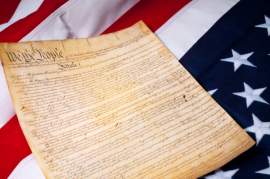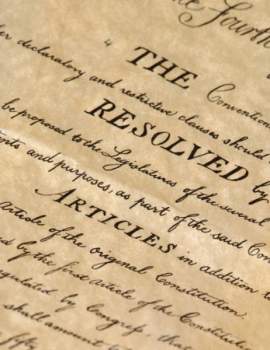
Article 3

Popular In Constitution
Purpose Of Lifetime Appointment And Pros And Cons Enumerated Powers Bicameral Legislature Background Article 3 Of The Constitution We The People 1st Amendment Who Wrote The Constitution Judicial Review Equal Protection Clause Three Fifths Compromise 5th Amendment 10th Amendment
The first three Articles of the United States Constitution set up the Legislative, Executive, and Judicial Branches of Government that comprise the structure of the United States governing body. Article III of the Constitution deals specifically with the Judicial Branch of the United States, providing for the general architecture of the judicial system.
Section 1 of Article III states that there should be a sole high court, the Supreme Court, that shall have the vested judicial powers of the United States. However, it also provides for inferior courts to help with the function of the judicial system and to allow for a better structure to delegate judicial power.
It is of worthy note that the Constitution does not
actually provide for an established number of judges to hold office in the
Supreme Court. Article III only requires that there be only one Federal
court. However, the number of Supreme Court Justices
would be established later through additional statutes,
setting the number at nine. There is one Chief Justice and
eight Associate Justices
appointed to the Supreme Court.
Federal Judiciary Act of 1789:
The Federal Judiciary Act of 1789 was the landmark
statute that was introduced in the first session of the United State Congress. The
Judiciary Act established the Unites States Federal Judicial Branch. Article
III of the United States Constitution states that one Supreme Court is to be
vested with the nation's judicial powers. Initially, this provision was met
with dispute and opposition, for many feared that establishing all judicial
powers into a single court would leave the door wide open for tyranny. Many of
the opponents suggested that the Supreme Court powers be delegated among local
courts as well. However, Congress would establish the Supreme Court with the
intentions of having broader jurisdiction of the Federal power, which would
allow for enforcement of national laws at the State level.
The Act would give the Supreme Court jurisdiction over all civil matters between states, the states and the United States, and over matters dealing with ambassadors and diplomatic officials. The Act would also state that there would be six Supreme Court Justices, one being a Chief Justice and the other five being Associate Justices.
The Judiciary Act would also create both the Office of Attorney General and the United States Marshal’s Service that would serve each individual judicial district also created by the Act. These judicial districts were created in each of the eleven states that ratified the Constitution. Each State would have one district, with the exception of Massachusetts and Virginia, each of which would have two. The Judiciary Act of 1789 would also allow for the power of the Supreme Court to issue writs of mandamus, but this would later be declared unconstitutional in the landmark case of Marbury v. Madison.NEXT: Constitution At A Glance





















